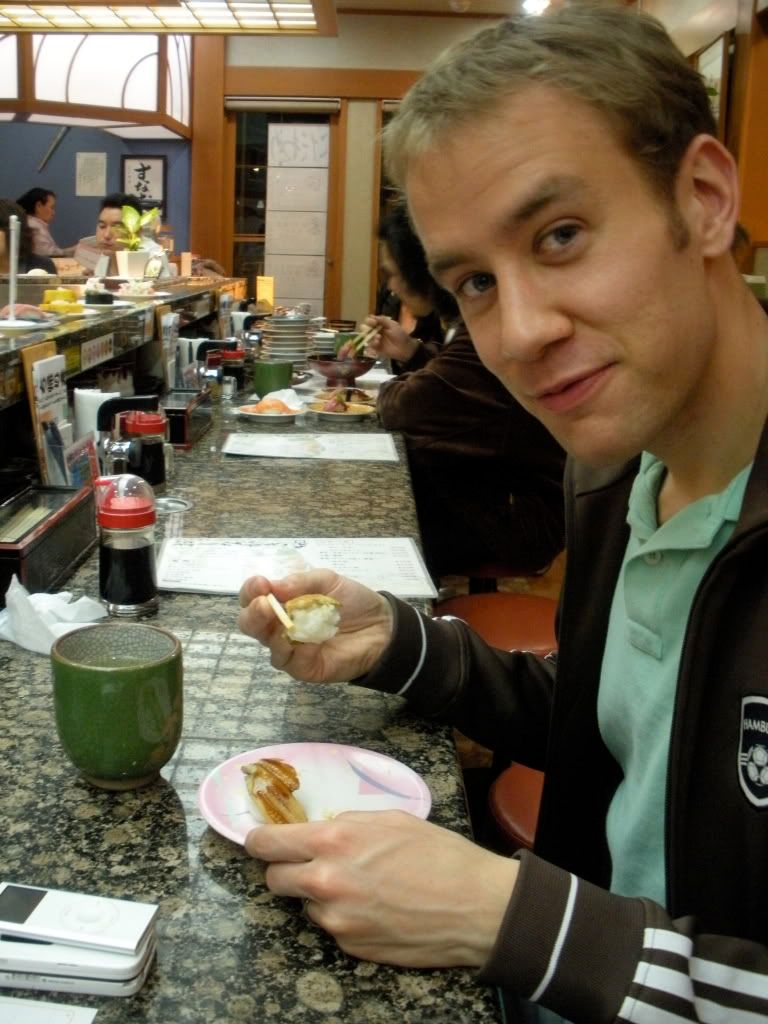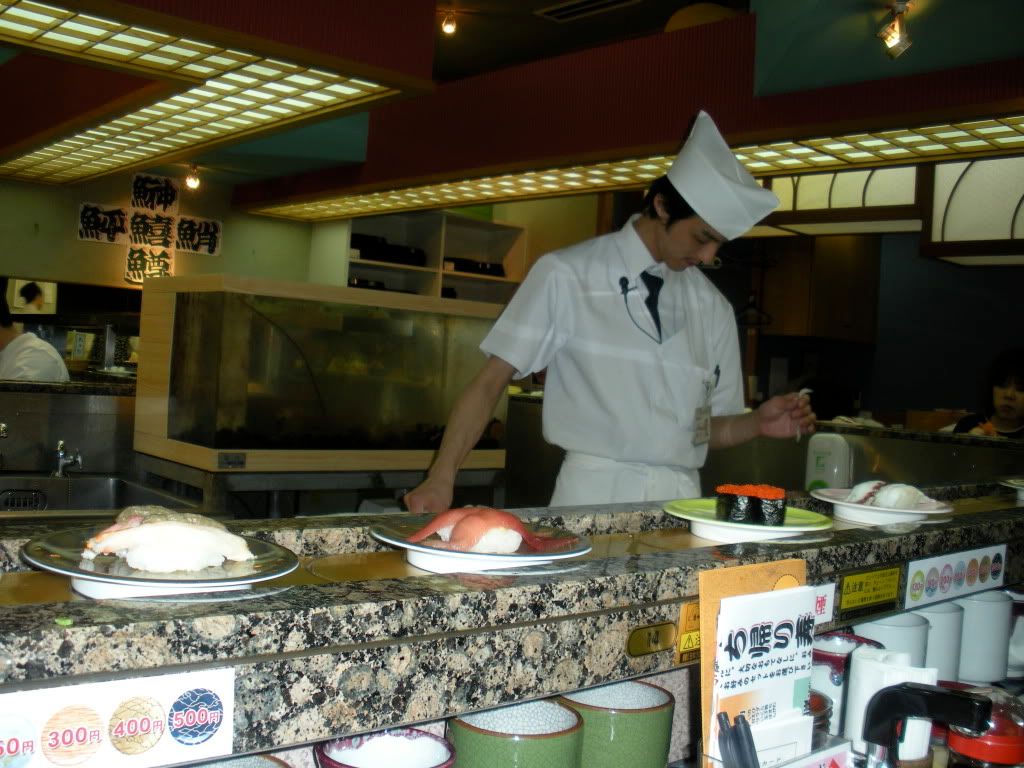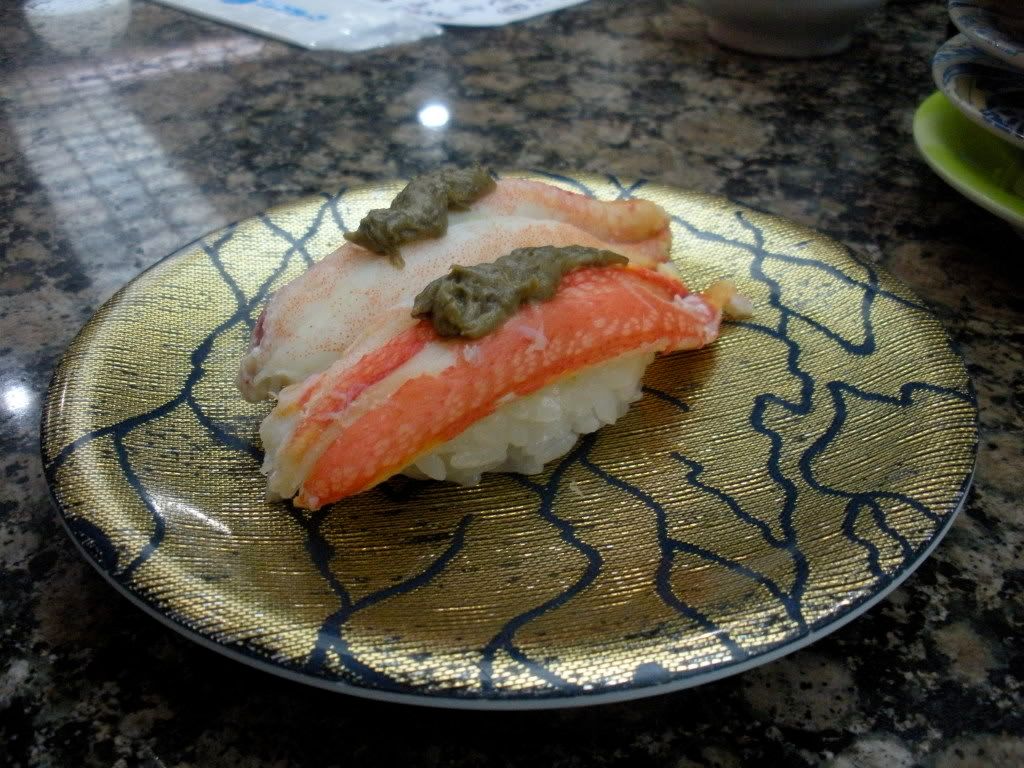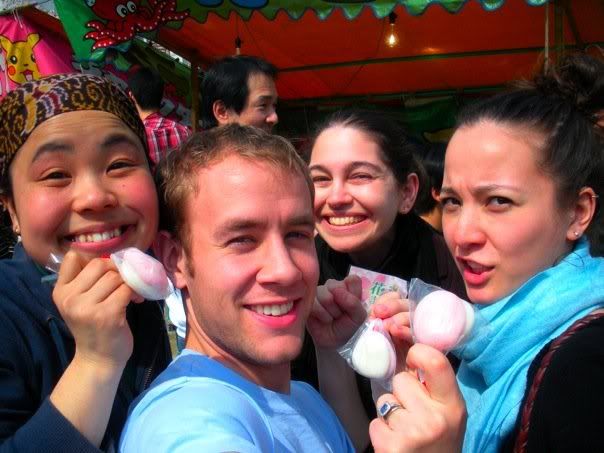Today (Saturday, April 4) marks two full weeks in Japan, and the end of our first week of teaching. Our first week here was spent observing our previous teachers, taking notes and getting familiar with the teaching materials, students and class schedule. The second week, Joe and Liz were packing, paying their last bills and getting ready to head back home to Philly. On Wednesday morning of last week, we bid them farewell, asked a few last minute questions and then the taxi whisked them away to the airport to begin their journey home.
We feel very grateful that we were able to have the overlap week with Liz and Joe since they introduced us to a lot of places (Rurikoji, Ichi No Saka Gawa, shops, etc.) and people (other English teachers, students, Japanese teacher, etc.) in Yamaguchi. We feel like we are making a much smoother transition into teaching and living in Yamaguchi because of their wonderful assistance.
As I explained to most of my adult students this week (hopefully some of you are reading this!), our transition to living in Yamaguchi required us to get accustomed to many things that are different from living in Chicago:
(1) Geographically, Chicago is very flat land, but Yamaguchi has many mountains.
(2) Chicago is a very big city with many skyscrapers, such as the Sears Tower, but Yamaguchi is a much smaller city with no skyscrapers. Chicago is the 3rd largest city by population in America
according to Wikipedia, I'm not sure where Yamaguchi ranks in Japan, but I'm guessing it is not in the top 5.
(3a) Driving in Japan is the opposite from driving in America in many ways: In Japan, you drive on the left side of the road, but in America you drive on the right side of the road. In Japan, the driver is on the right side of the car, but in America the driver is on the left side of the car. Fortunately, we have an automatic transmission car so we don't have to learn how to drive manual with our left hands!
(3b) Most cars in Yamaguchi are much smaller than cars in America. Our car in Yamaguchi is a Mistubishi Minica... as you can see by the picture below, it's an appropriate name.


Our car in America was a 4-door Honda Accord sedan, which is a mid-size car by American standards, but a pretty large car by Yamaguchi standards. The largest car I've seen here is one Hummer H3, but that was only once, and the rest of the time I've seen mostly 2-seat hatchbacks, SMART car type vehicles, or Honda Civic sized 4-door cars.
(3c) On the roads, the speed limits here are all in Kilometers per Hour, there isn't even a Miles Per Hour printed on our car's speedometer.
(3d) Driving etiquette is much more polite and subdued in Yamaguchi than it is in Chicago. In Yamaguchi, people don't really speed much, but in America people speed all the time, especially taxi drivers. In Chicago, people tailgate, honk their horns a lot, drive aggressively, and are very impatient with pedestrians and bicyclists. In Yamaguchi, you seldom hear a car horn, drivers are very passive, and mostly very patient with pedestrians and bicyclists.
(3e) The bicycle to car ratio here is much higher (more bicycles per car) than in Chicago, and bicyclists respect the right-of-way rules fairly religiously: no crossing at a red light until you get a walk signal, even if you can't see any cars coming from either direction; drivers don't make left on red turns, and all drivers must make a full stop before railroad crossings (if you don't and you get caught, you will probably get a ticket).
There are many more things that we've had to get accustomed to here in Japan, but I have already written too much for one blog post, so I will save it for the next post. This weekend is the White Fox Festival in Yuda (bicycle distance for us), so be sure to check back for pictures and descriptions from this weekend!
to my family and friends in America - we love you all and hope to hear from you soon!
to my students - were you able to understand this post? what questions do you have?
 Here's the link.
Here's the link.















